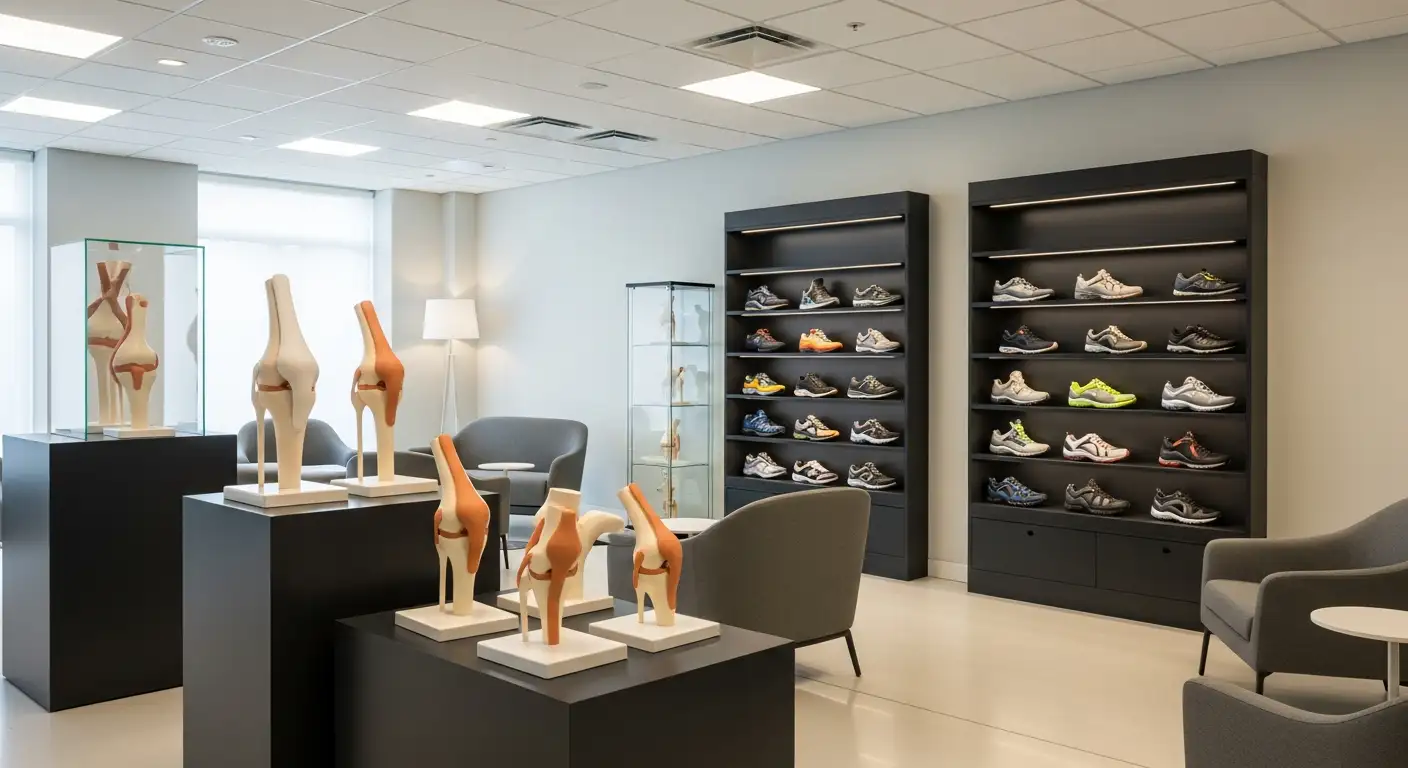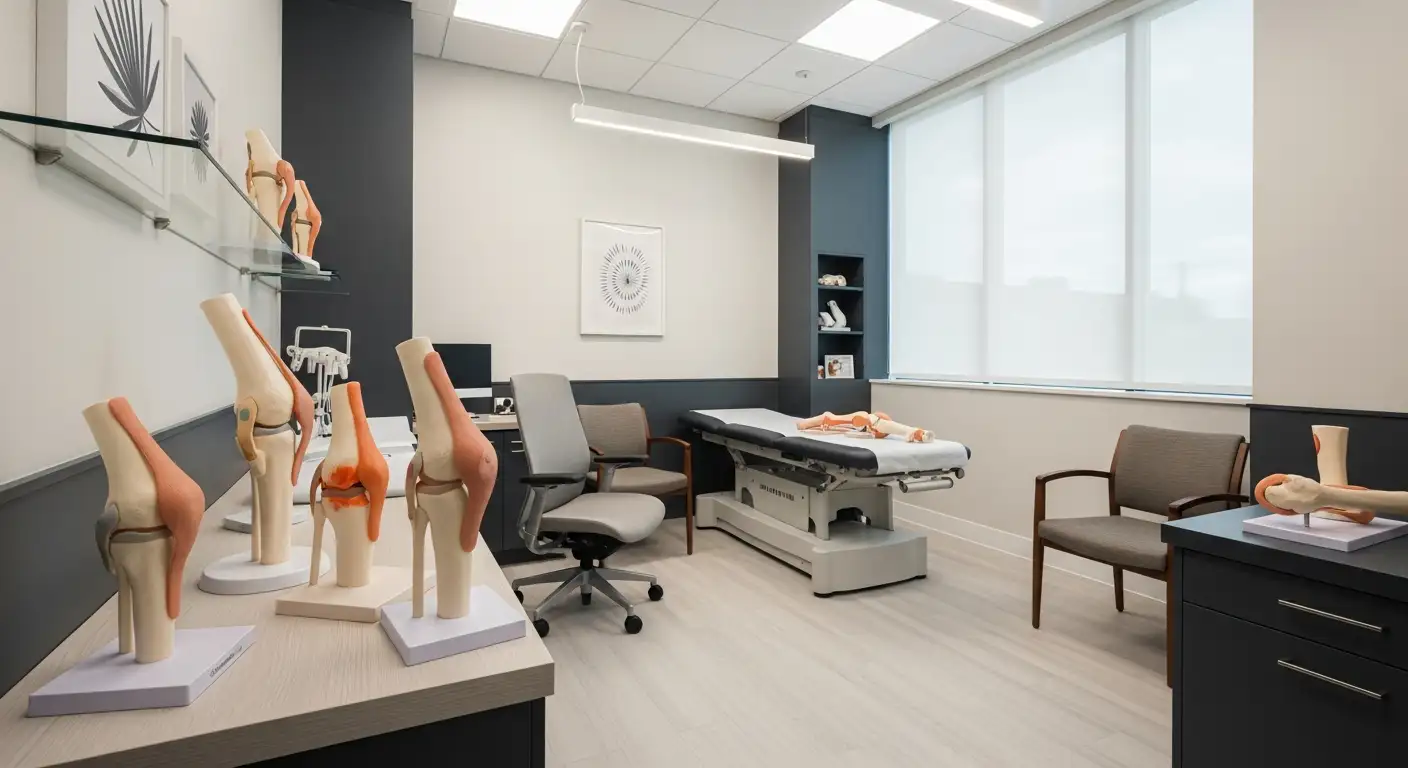Understanding the Importance of a Perfect Knee Flexion
A 90-degree knee bend is a critical milestone in knee rehabilitation, representing the ability to flex the knee to a right angle. It signifies functional mobility necessary for daily activities and is often a focal point during recovery from injury or surgery. This comprehensive article explores what constitutes a 90-degree knee bend, how it can be achieved, and the techniques to optimize knee flexion.
Defining a 90-Degree Knee Bend and Its Significance
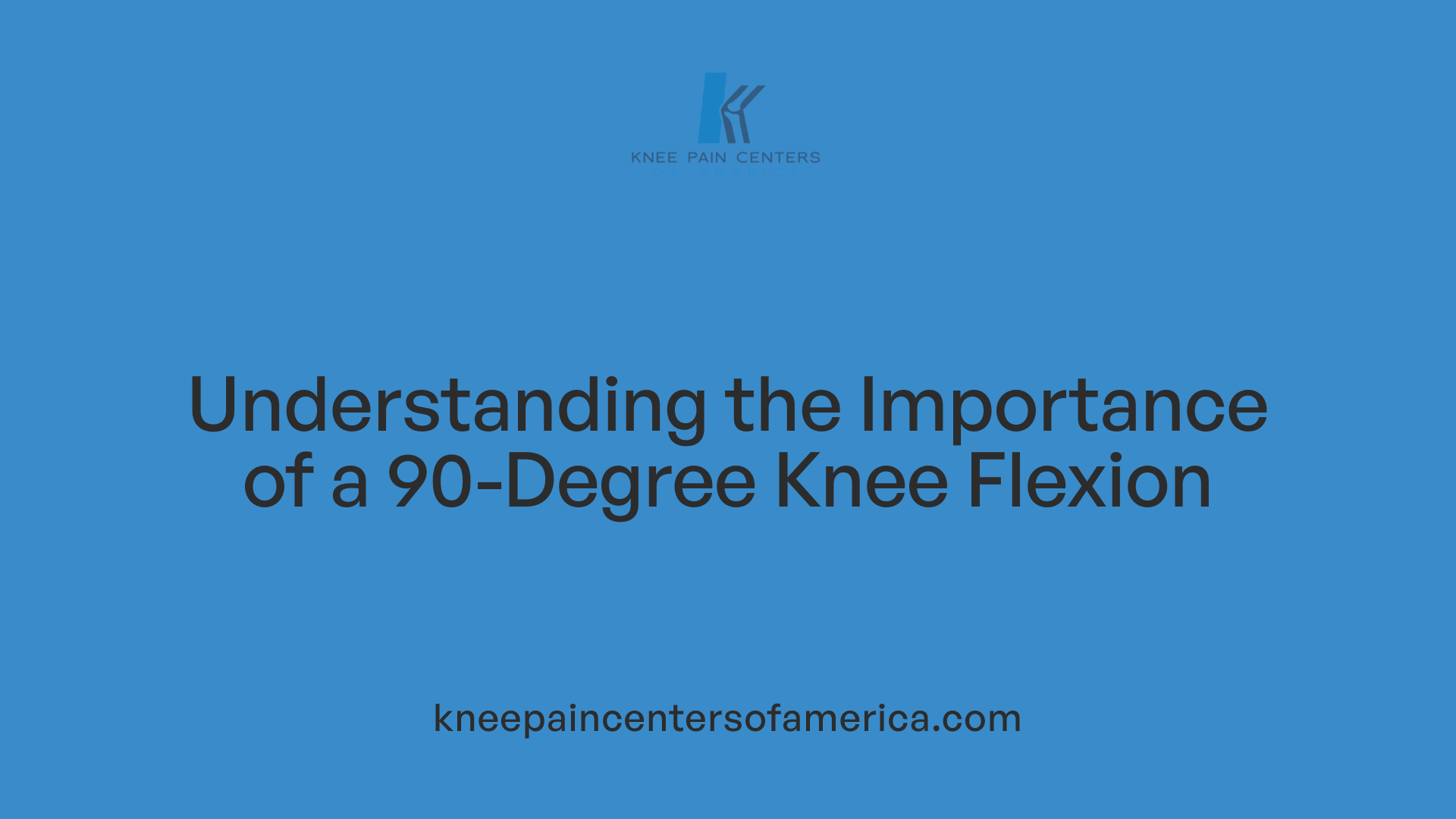
What does a 90 degree knee bend look like?
A 90-degree knee bend occurs when your thigh forms a right angle with your lower leg. In this position, your knee is bent so that your shin is perpendicular to your thigh, resembling a sitting posture or a typical yoga squat. This angle is considered an important milestone during knee rehabilitation and recovery, indicating sufficient flexibility and range of motion.
Visualizing this position can be easy: imagine sitting on a chair with your feet flat on the ground. Your knees should be at roughly 90 degrees, supporting your body weight comfortably. This position is central in many exercises and daily movements.
Should your knees be bent at a 90 degree angle?
In regular activities, a knee bend around 90 degrees is natural and functional. Proper ergonomics suggest that sitting in a chair, squatting, or descending stairs typically involves this degree of flexion.
Maintaining knees at approximately 90 degrees helps promote joint health by distributing forces evenly and preventing undue stress. It also makes movement more efficient and less painful after injury or surgery.
Why is this angle vital in daily life and rehabilitation?
Reaching a 90-degree bend is crucial for performing numerous daily activities such as sitting, running, climbing stairs, or rising from a seated position. In rehabilitation, achieving this flexion indicates that the knee has regained enough mobility for normal function.
Limitations in reaching or maintaining this angle can result in difficulty with sitting comfortably, walking properly, or engaging in sports. Therefore, therapy aims to restore and maintain at least this degree of knee flexion early in recovery.
Activities requiring a 90-degree flexion
Many everyday tasks depend on the ability to flex the knee to about 90 degrees or more:
| Activity | Typical Range of Knee Flexion Needed | Significance |
|---|---|---|
| Sitting in a chair | 90° | Allows comfortable seated posture |
| Climbing stairs | 85-90° | Facilitates smooth ascent and descent |
| Descending stairs | 90° or more | Ensures stability and safety |
| Bending to pick things up | 90-110° | Prevents back strain |
| Sitting cross-legged | 120° | Enhances flexibility and mobility |
Achieving and maintaining this level of flexion is essential for independence and quality of life.
In conclusion, a 90-degree knee bend is a fundamental position that signifies good joint flexibility. It plays a critical role in daily movement, rehabilitation, and overall knee health. Regular exercises, physiotherapy, and proper care help restore this range after injury or surgery, ensuring both function and comfort.
Mechanics and Normal Range of Knee Flexion
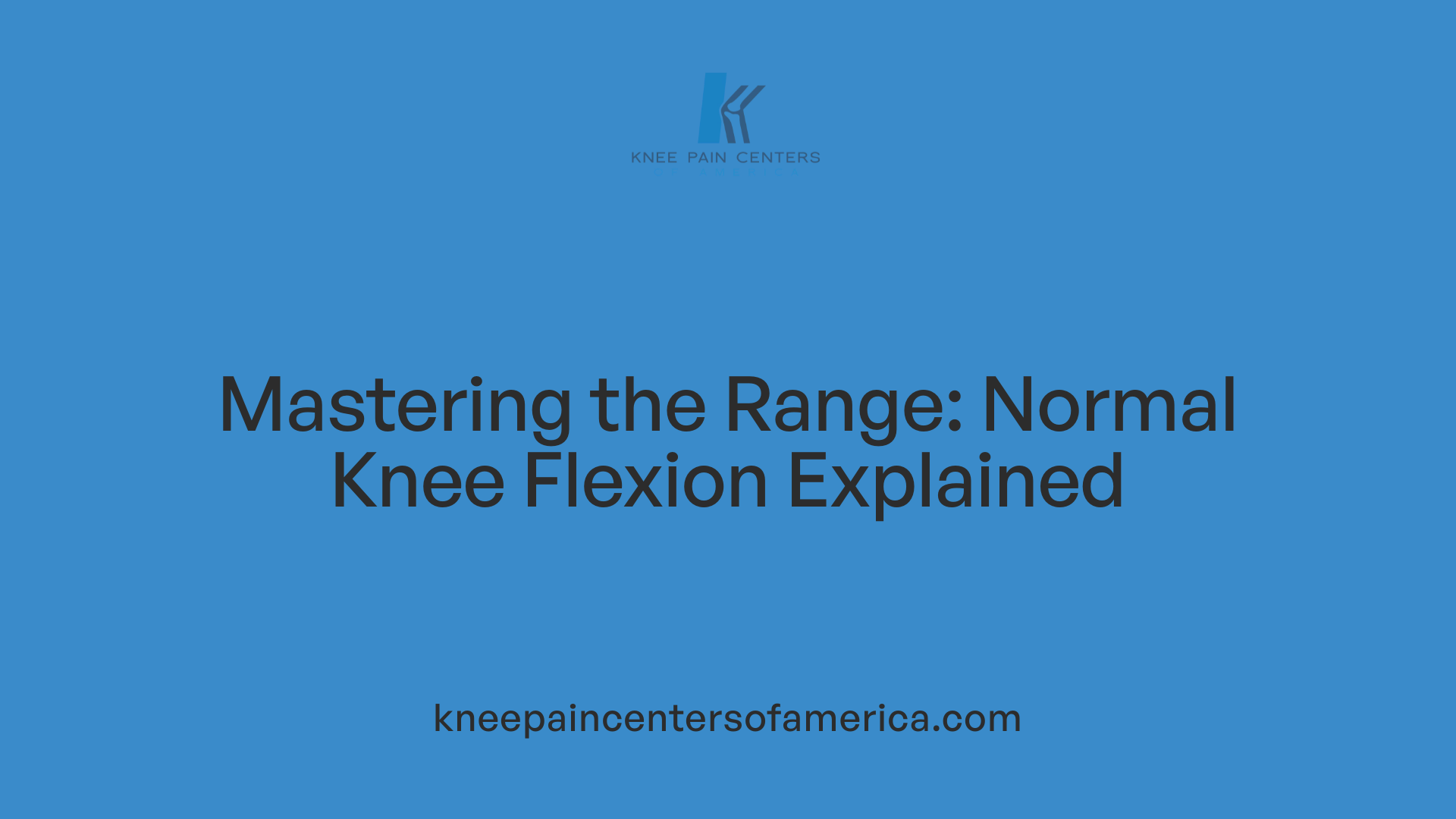
What is a 90 degree knee bend and how can it be achieved?
A 90 degree knee bend means flexing your knee so that your thigh and calf form a right angle, similar to sitting down. This movement is essential for many daily activities like sitting or climbing stairs. After injury or surgery, especially knee replacement, achieving this bend can be challenging due to swelling, pain, or soft tissue restrictions.
Gradually, through physiotherapy, controlled stretching, and specific exercises, people can restore this movement. Exercises such as assisted knee flexion with the hip at 90 degrees in a supine position, using tools like resistance bands or towels, help increase knee bend. In the initial days or weeks after surgery, gentle movement, ice, and compression aid recovery. Typically, significant improvement occurs within 7 to 10 days post-operation when guided by a healthcare professional.
Is 90° knee flexion good?
Yes, reaching 90 degrees of knee flexion is generally considered sufficient for most basic daily activities like walking and climbing stairs. It allows the knee to bend enough for standing up from a seated position or walking comfortably. However, for more complex movements, higher degrees of flexion are preferable.
Many patients and physical therapists aim for up to 120 degrees of flexion for optimal mobility. Achieving this range enhances activities like sitting cross-legged, riding a bike, or squatting. The goal is to regain as much flexibility as possible, ideally around 110 to 120 degrees, to ensure a full, functional range of motion.
Understanding the Normal Range of Knee Flexion
Knee flexion, which is the act of bending the knee, varies slightly among individuals but generally falls within certain ranges for normal function.
| Activity | Typical Flexion Range Required | Comments |
|---|---|---|
| Walking | Up to 65° | Sufficient for normal gait |
| Climbing stairs | Around 85° | Necessary for ascending |
| Descending stairs | About 90° | Bending to descend comfortably |
| Sitting | Up to 100° | For sitting and standing transitions |
| Cross-legged sitting | Around 120° | Deep seat position |
| Cycling | 110° - 120° | Complete pedal strokes |
The typical maximum knee flexion maxes out around 145°, with some individuals reaching 150°, depending on flexibility and health.
Factors Affecting Knee Flexion
Several factors can influence how much a person can bend their knee:
- Swelling and Inflammation: Post-injury or post-surgery swelling can limit movement.
- Scar tissue and soft tissue restrictions: Excess scar tissue, tight muscles like quadriceps or fascia, or joint stiffness can impair flexion.
- Muscle tightness: Tightness of the front thigh muscles such as quadriceps or rectus femoris can restrict knee bending.
- Pain: Pain from injury or condition discourages full movement.
- Nerve impact: Nerve issues can lead to reduced mobility.
Proper management, including icing, massage, joint mobilization, and targeted exercises, helps improve flexion. In some cases, surgical interventions like scar tissue removal or manipulation under anesthesia might be necessary.
Restoring knee flexion is vital after surgeries like knee replacement or ACL reconstruction, as it ensures activities are performed comfortably and reduces compensatory injuries. Consistent physiotherapy involving exercises like heel slides, supported squats, and stretching routines are effective. Monitoring flexion with tools like a goniometer can assess progress and guide therapy.
For example, measurements involve lying on your back, aligning a goniometer against your thigh and calf, then gently bending the knee to record the angle. Achieving a flexion of 110-120° is often the target for functional activities, while full flexion (up to 145°) is ideal for unrestricted mobility.
Understanding these aspects can help patients and practitioners develop realistic goals and effective recovery plans for knee flexibility.
Post-Surgical Flexion Goals and Rehabilitation Strategies

How does knee flexion range vary after knee surgery or replacement?
After knee surgery, particularly total knee arthroplasty, initial flexion ranges are often limited to about 50-60° on the first day in hospital. In the subsequent days, with diligent physiotherapy and swelling management, this range gradually increases. Long-term, most patients aim for around 125° of flexion, with some exceeding this goal. Achieving full flexion, close to 140° to 145°, is ideal for optimal activity and function.
Swelling, joint stiffness, pain inhibition, and muscle tightness are common contributors to limited flexion post-surgery. Effective strategies involve controlling swelling through ice, compression, and elevation, which help reduce pain and stiffness. Over time, with proper therapy and exercises, patients can regain normal knee movement, making daily activities easier and more comfortable.
What exercises or therapies can help improve knee flexion to 90 degrees?
Improving knee flexion to 90 degrees involves a combination of gentle stretching, assisted movement, and strengthening exercises. Physiotherapists often recommend techniques such as heel slides, where you lie on your back and slide your heel towards your buttocks, to progressively increase bending.
Assisted exercises play a vital role, especially soon after surgery. Using tools like resistance bands or towels, supported knee bends, or even manual assistance from a therapist can help overcome initial stiffness. Additionally, therapies like massage to relax tight muscles or fascial glides to improve tissue mobility support the recovery process.
Gradually, more active exercises—like supported squats or sitting knee bends—are introduced as the knee gains mobility. Consistent practice, under professional guidance, ensures safe progression and optimal recovery.
Role of swelling control and scar management
Swelling reduction is crucial in improving knee flexion. Icing, compression socks, and elevating the leg help decrease fluid buildup and pain, promoting better joint movement. Additionally, scar tissue can hinder flexibility; therefore, techniques such as fascial glide, massage, and, if necessary, scar tissue removal surgeries can enhance tissue mobility.
Proper scar management and early mobilization prevent excessive adhesion formation. Physiotherapy often incorporates these aspects through manual therapy, appropriate exercises, and sometimes interventions like manipulation under anesthesia if stiffness persists.
| Aspect | Techniques / Tools | Expected Outcomes |
|---|---|---|
| Flexion exercises | Heel slides, supported squats, end-range flexion | Increased bending capacity, improved functional movement |
| Swelling reduction | Ice packs, compression stockings, elevation | Decreased pain and stiffness |
| Scar and tissue mobility | Fascial glide, massage, scar tissue removal | Better tissue flexibility, fewer restrictions |
| Professional rehab approach | Physiotherapy, guided exercises, manual therapy | Gradual recovery to normal range, optimized function |
Understanding and actively working towards increasing knee flexion after surgery is essential. Regular exercises, swelling control, and scar management play interrelated roles in restoring movement, enabling a return to daily activities and sports with confidence.
Techniques to Reclaim Flexion and Overcome Restrictions
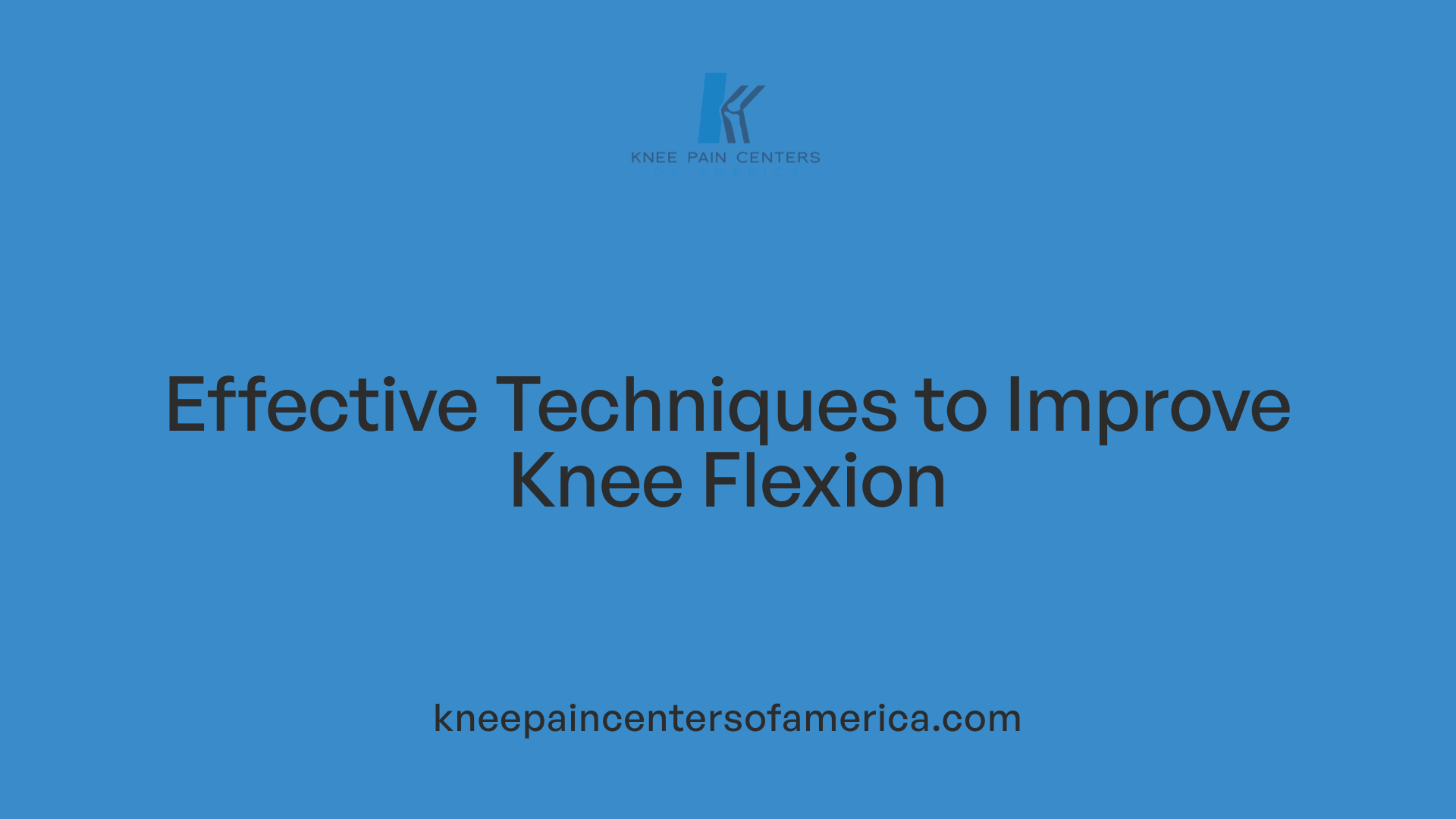
What is involved in rehabilitating knee mobility after injury or surgery?
Rehabilitation of knee mobility generally includes targeted physiotherapy exercises to regain full range of motion. Managing swelling through icing, elevation, and compression can significantly improve mobility. Soft tissue techniques such as massage and joint mobilization are used to loosen tight muscles, fascia, and joint structures, while breaking down scar tissue that can limit movement.
Physiotherapists often guide patients through specific exercises to improve flexibility and strength. In addition, addressing pain, controlling inflammation, and ensuring proper movement patterns are essential components. For persistent limitations, more advanced interventions like manipulation under anesthesia or surgery (e.g., ACL reconstruction or total knee replacement) may be necessary.
What exercises or therapies can help improve knee flexion to 90 degrees?
Several techniques are effective in enhancing knee bending capacity. Thigh muscle rolling helps loosen tight quadriceps and rectus femoris muscles. Patella tendon massage can reduce stiffness in and around the kneecap.
Fascial glide techniques focus on freeing tight fascia, while guided stretching exercises using straps or resistance bands allow controlled extension of knee range.
Specific exercises like supported knee bends, utilizing tools such as towels or resistance bands, are utilized to gently increase flexion. An example is the 'Assisted knee flexion with hip at 90 degrees in supine', where support under the foot and knee assists in bending the joint. With gradual, consistent practice, patients can work towards full range of motion.
Using Tools and Approaches to Enhance Recovery
Utilizing simple tools like elastic stretch bands or towels can facilitate safe stretching and knee flexion. Resistance bands help reduce pain inhibition, making it easier to bend past initial stiff points.
Massage devices, including muscle roller sticks, Gua Sha tools, and massage guns, relax muscles and fascia around the knee to promote greater flexibility. Stretching straps with elastic loops are also handy for controlled knee bending exercises.
Gravity-assisted techniques, such as hanging the leg off the edge of a bed, leverage natural weight to enhance flexion over time.
Consistent, supervised practice of these methods, combined with proper technique and safety protocols, provides the best chance for recovery. Always consult healthcare professionals before commencing these activities to avoid injury.
For more detailed approaches, searching for 'knee mobility restoration techniques and therapies' can provide comprehensive strategies tailored to individual needs.
Impact of Swelling and Scar Tissue on Knee Flexion
 Swelling after knee injury or surgery can significantly restrict the ability to bend the joint properly. Managing this swelling is a crucial step in restoring full knee function. Techniques such as massage, wearing compression socks, elevating the leg, and applying ice are commonly used strategies. These methods help reduce inflammation, lessen joint stiffness, and improve overall mobility, allowing physical therapy exercises to be more effective.
Swelling after knee injury or surgery can significantly restrict the ability to bend the joint properly. Managing this swelling is a crucial step in restoring full knee function. Techniques such as massage, wearing compression socks, elevating the leg, and applying ice are commonly used strategies. These methods help reduce inflammation, lessen joint stiffness, and improve overall mobility, allowing physical therapy exercises to be more effective.
In addition to swelling, scar tissue formation at the knee can limit movement. Scar tissue may develop as part of the healing process, especially if swelling persists or if there has been significant tissue damage. To address this, physiotherapists often employ treatments like fascial glide, scar tissue release, and soft tissue mobilizations. These techniques help break down restrictive tissues and promote flexibility.
When conservative treatments are insufficient, procedures such as scar tissue removal surgery or manipulation under anesthesia may be considered to restore mobility. These interventions specifically target the hardened tissues that impede bending, improving the range of motion.
Long-term effects of ongoing swelling or excessive scar tissue can cause persistent restrictions, impacting daily activities like walking, climbing stairs, or sitting comfortably. Continuous physiotherapy and exercises—such as gentle supported knee bends, stretching, and strengthening routines—are important for ongoing recovery. In some cases, failure to manage swelling and scar tissue effectively can lead to chronic stiffness, pain, and the need for further surgical interventions.
| Topic | Description | Additional Details |
|---|---|---|
| Swelling management | Reduces inflammation and improves mobility | Ice, elevation, compression, massage |
| Scar tissue removal | Restores tissue flexibility | Surgery, fascial release, manual therapy |
| Long-term effects | Limited range of motion, functional impairment | Ongoing exercises, therapy, potential surgery |
Effective management of swelling and scar tissue plays a vital role in recovering knee flexion. Early intervention, combined with targeted therapies, can minimize long-term restrictions and help patients regain their normal movement patterns.
The Role of Proper Walking and Functional Movements in Recovery
Maintaining proper gait patterns during recovery from knee injury or surgery is essential for optimal healing and function.
Correct walking techniques help prevent additional restrictions, reduce undue stress on the knee joint, and support the healing process. When you walk with proper alignment and stride, you avoid compensatory movements that can lead to pain or further injury.
Limping or abnormal gait patterns can put uneven pressure on different parts of the knee and leg, potentially impeding recovery or causing long-term issues. Therefore, physiotherapists often emphasize gait correction as part of rehabilitation, encouraging patients to walk smoothly and steadily.
Avoiding limping and compensations is particularly important because these habits can increase strain on muscles, ligaments, and joints that are already vulnerable. Developing good walking habits helps restore normal movement and improves overall limb function.
Supporting knee flexion extends beyond exercises—it involves integrating proper movement strategies into daily activities. For example, walking with a controlled step, avoiding excessive heel or toe gait, and practicing safe stair navigation can keep the knee mobile and promote flexibility.
For patients recovering from surgery or injury, regularly monitoring and correcting gait mechanics is vital. This often includes exercises like walking with assistance, practicing specific movement patterns, and receiving guidance from healthcare professionals.
In summary, proper walking and functional movement practices are crucial for accelerating recovery, maintaining knee health, and ensuring a return to everyday activities without pain or limitations. Learning and reinforcing these habits through physiotherapy and consistent practice can both prevent setbacks and enhance long-term joint function.
For further details on gait correction and knee flexion recovery, searching relevant health resources can provide additional tips and professional advice.
Conclusion: Achieving and Maintaining Full Knee Flexion
To restore full knee flexion after injury or surgery, various techniques and exercises can be effective. Gentle stretching methods such as supported knee bends, heel slides, and end-range flexion exercises help elongate tight tissues. Massage tools and manual therapy techniques like fascial glide, patella tendon massage, and muscle rolling target muscle tightness and scar tissue, making joint movements easier.
Joint mobilizations, including knee traction, tibial internal rotation, and patella mobilizations, work to loosen the knee joint and improve range of motion. These can be complemented by physiotherapy interventions such as manipulation under anesthesia if conservative treatments are insufficient.
Exercises that focus on controlled bending—like assisted knee flexion with the hip at 90 degrees—are crucial. Performed with assistance, these exercises help progressively increase knee bending capacity. Using supports such as towels or resistance bands can aid in achieving greater flexion while minimizing discomfort.
The primary goal for recovery is reaching at least 110-120°, which enables most daily activities, including comfortable seating and cycling. The normal flexion range is up to approximately 145°, but even a flexion of 60°-90° suffices for basic functions like walking or climbing stairs.
Consistent physiotherapy and exercises are essential. They include stretches, eccentric strengthening, and captured movements like supported squats and heel slides. Proper walking patterns and avoiding limping also help prevent restrictions.
In long-term management, maintaining knee flexibility reduces scar tissue buildup, prevents pain, and promotes overall joint health. Regular activity and exercises tailored to your recovery stage are advised for sustained mobility.
| Technique/Exercise | Purpose | Typical Range / Details |
|---|---|---|
| Gentle stretching (supported knee bends) | Improve flexibility | Achieving and surpassing 90° of flexion |
| Massage and fascial release | Relax muscles, reduce scar tissue | Facilitates easier joint movement |
| Joint mobilizations | Loosen joint structures | Increase ROM, targeted at stiffness |
| Assisted knee flexion exercises | Gradually increase bending range | Using tools, supports, or assistance |
| Resistance band stretching | Aid in flexion beyond 90° | Reduce pain inhibition, improve mobility |
| Physiotherapy sessions | Supervised recovery and progression | Incorporates multiple techniques |
Achieving and maintaining proper knee flexion is vital for regaining full mobility. While early improvements are common, long-term success depends on continued exercises and joint care. For persistent issues, consultation with healthcare professionals is essential to tailor an effective rehabilitation plan.
For more detailed strategies on how to sustain long-term knee flexibility and functional mobility, searching
The Path to Functional Flexion and Beyond
Achieving a full 90-degree knee bend is a vital milestone on the road to recovery. Through targeted exercises, soft tissue techniques, swelling management, and guided rehabilitation programs, patients can restore and even exceed this movement. Patience, consistency, and professional guidance are essential to maximize mobility, prevent setbacks, and regain confidence in daily and athletic activities.
References
- Exercises To Do When The Knee Can't Bend - Posture Direct
- Assisted knee flexion with hip at 90 degrees in supine (exercise video)
- What range of motion should I be getting after my knee replacement?
- 5 ways you can regain KNEE FLEXION right now
- Top 3 Secrets for Increasing Knee Bend: Total Knee Arthroplasty
- How to Measure Knee Flexion at Home: 8 Steps (with Pictures)
- Can't Bend Knee Past 90 Degrees Without Pain? - More 4 Life
- Problems that people face after a Total Knee Replacement
